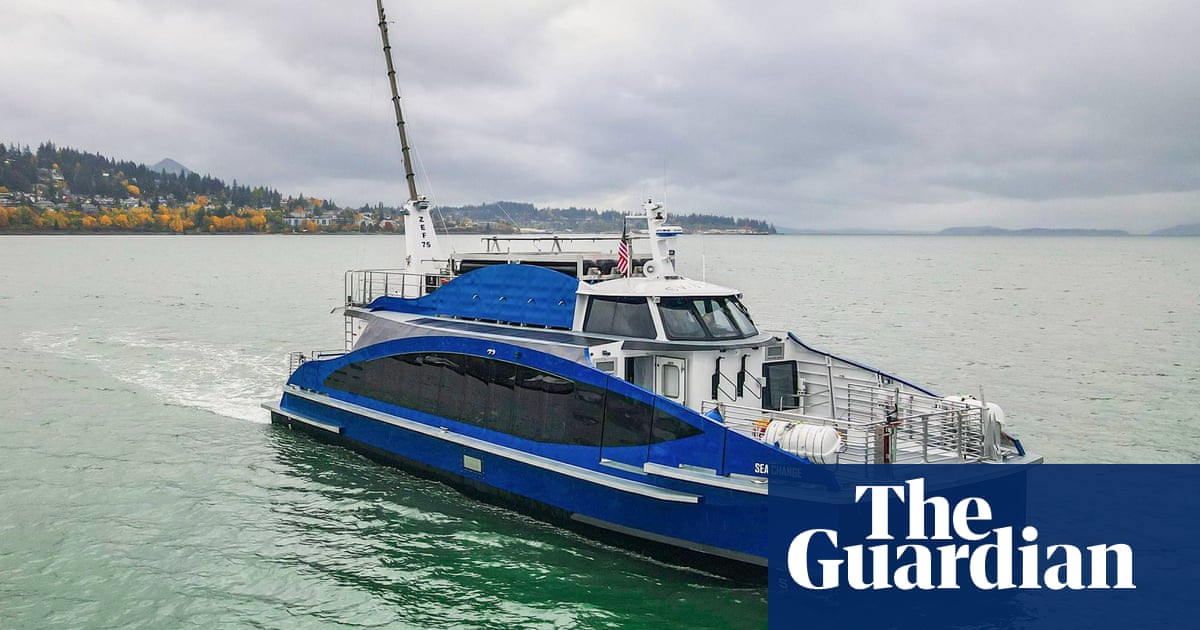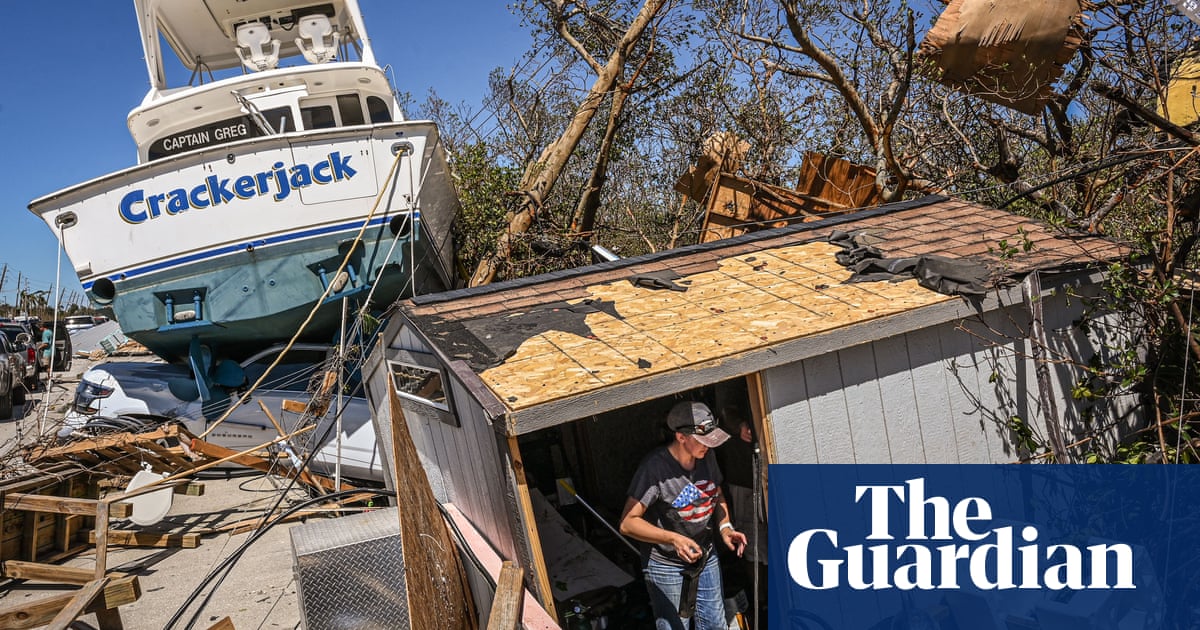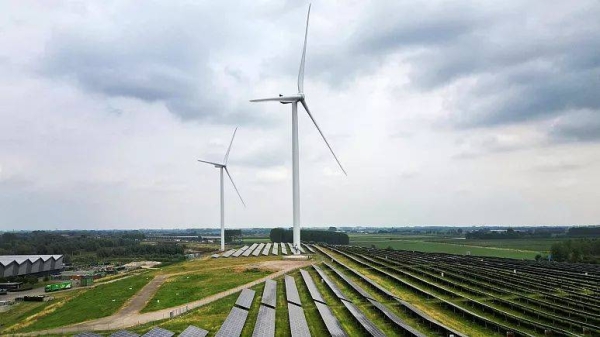
The passenger ferry MV Sea Change is due this month to make its maiden voyage across San Francisco Bay. But it won’t be the usual hour-long chug for the 75 passengers travelling north to Vallejo, California. Guests might notice how quiet the engine is – and they could even drink the emissions it releases.
That’s because MV Sea Change is the first commercial ferry to be powered not by the usual diesel engine but entirely from hydrogen. Its only emission is pure water.
The project is a pilot run as part of the San Francisco Bay Area Water Emergency Transportation Authority’s mission to phase out diesel-powered ferries by 2035. “We want to be a catalyst for the evolution of this technology,” says Seamus Murphy, the authority’s executive director.
Low-carbon shipping is making waves across the maritime sector. In May, for example, Future Proof Shipping launched a hydrogen-powered inland container ship that moves cargo between the Netherlands and Belgium several times a week. The company estimates this will cut 2,000 tonnes of CO2 annually that diesel engines would have emitted.
The potential benefits of cleaner shipping to the oceans and the climate emergency are stark. Shipping accounts for nearly 3% of total global greenhouse gas emissions, according to a study published in 2020 by the International Maritime Organization. Conventional engines also emit particulates that pollute the air and water, while shipping noise disrupts marine wildlife – inducing chronic stress in North Atlantic right whales, for example.
Shipping is already trying to cut fuel consumption, though in very modest ways. More than 20 commercial cargo ships use wind power to reduce fuel use. But this is a minuscule proportion of the more than 50,000 merchant ships sailing the world’s seas, and weather conditions are too unpredictable and inconsistent to make transport fully wind propelled.
Some diesel ships use air lubrication to reduce friction between the sea and the hull by creating a carpet of tiny bubbles over the flat base of the vessel, resulting in a moderate reduction in fuel consumption and greenhouse gas emissions.
Hydrogen is one of the most promising alternative fuels for decarbonising shipping because it is lightweight and vehicles can travel a long way without refuelling, according to Jacob Armstrong, sustainable shipping manager at the Brussels-based thinktank Transport and Environment.
Nearly half (43%) of all voyages made along the longest shipping corridor between China and the US could be powered by hydrogen without adding any fuel capacity or extra port calls, according to the International Council on Clean Transportation. What’s more, 99% of voyages on the route could be hydrogen-fuelled with some adaptations – either by replacing 5% of cargo space where possible with more hydrogen fuel, or by adding one port call to refuel en route.
That said, hydrogen is no magic bullet. While there may be no harmful emissions, its production is energy intensive, as it is currently sourced largely from fossil fuels. There are cleaner options, such as “green” hydrogen – extracted from water by electrolysis (or running electricity from renewable sources through water molecules to split them) – but this is not yet widely used.
Moreover, storing hydrogen is a challenge. High-pressure containers are needed to store it as a gas; if in liquid form, hydrogen requires extremely low (cryogenic) temperatures because its boiling point is -252.8C (-423F). A lightweight yet sturdy tank is being designed in the US by hydrogen fuel cell developer HyPoint and tankmaker Gloyer-Taylor Laboratories for use in aviation and shipping. The Norwegian firm Marine Service Noord also designs double-walled pipes that can be used in pressurised hydrogen-storage systems.
For shorter distances, electrification could become more mainstream than hydrogen, especially as batteries become smaller and prices go down. “Within short-range shipping, I think battery ferries will be dominant within the next five to 10 years,” says Henrik Hagbarth Mikkelsen, a master mariner and senior lecturer at Marstal naval academy in Denmark.
In Europe alone, 696 ferries operate in open sea waters on routes of less than 22 nautical miles (41km) , and these could easily be replaced by electric vessels, according to Mikkelsen.
Norled, a ferry operator in Norway, launched the first battery-operated, propeller-driven passenger vessel in 2015 and now operates about 80 electric ferries. “Norway [has] an excellent political landscape [for adopting electric vessels] … They’re on their way to decarbonising the majority of their [ferry] fleet in the next 10 years,” says Armstrong.
From 2026, all ships visiting the Unesco World Heritage Norwegian fjords will have to be zero emission, he adds. “So cruise companies now, who are traditionally the biggest laggards, have invested in battery and hydrogen technology. It’s the state that leads, and that’s how change happens.”
Viking Cruises, for example, is designing hydrogen-powered ships, while the Norwegian firm Hurtigruten has switched to using hybrid technology with batteries.
Likewise in southern Denmark, a fully electric ferry called Ellen transports passengers and vehicles on a 22 nautical mile daily route between the islands of Ærø and Als. This vessel, which Mikkelsen helped to engineer, has travelled 51 nautical miles on a single charge.
“Ellen operates at roughly 24% lower cost compared to a new diesel ferry … because electric solutions are lighter and much more energy efficient than conventional diesel systems,” says Eric Alström, president of Danfoss Power Solutions, a company that engineered parts of Ellen.
Ferries also have the edge over cars when it comes to charging infrastructure. Scheduled ferries are simpler to manage than road journeys, argues Alström. “We know exactly how much power will be needed, so at portside you can calculate how long you need to charge for, and that can be factored into the schedule.”
It does, however, require investment in local charging infrastructure tapping into renewable electricity sources – and that, he says, “takes guts from local government”.
The sourcing of raw materials to make electric batteries is an important consideration in how green the technology really is. European legislation is “looking good” in terms of promoting due diligence across the supply chain, says Armstrong, particularly around responsible mining for lithium from Chile and nickel from Indonesia.
The goal of 2050 is “definitely realistic” for rolling out clean shipping globally, according to Armstrong, who explains that Europe is driving the transition. “Once the EU as a region goes first, then we’ll see South Korea, America, Japan going next and there’ll be a domino effect.”
Near-term solutions will entail various combinations of technologies, he adds – for example, a mix of diesel and hydrogen for mid-sized ships. But the potential gains are enormous: “Moving to clean fuels will have a clear, definite benefit on our health and the ocean ecosystem’s health.”












